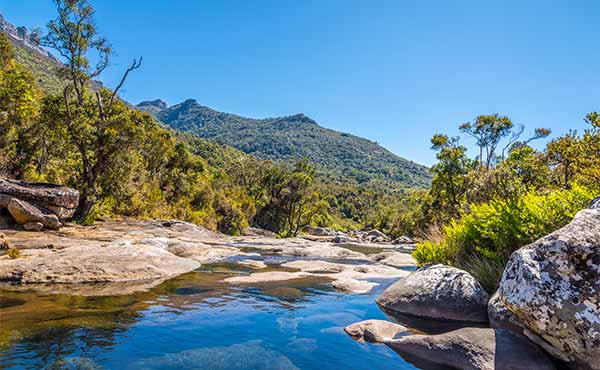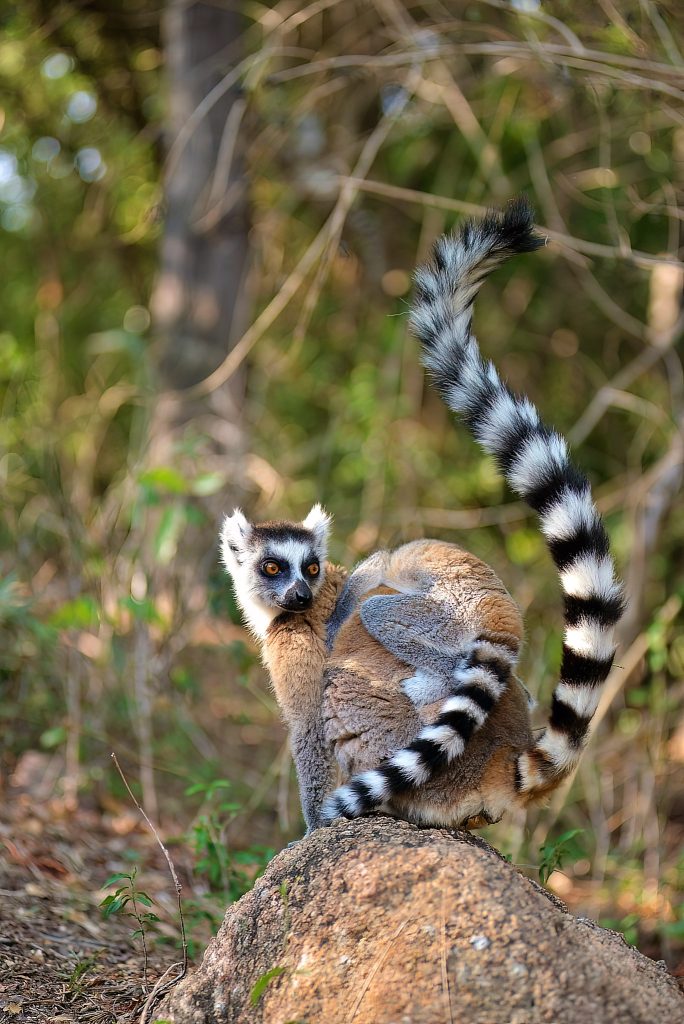Madagascar is an island unlike any other. Known for its breathtaking landscapes, remarkable wildlife, and unique ecosystems, the country offers something for every type of traveler. While the island’s famous landmarks like Avenue of the Baobabs and Tsingy de Bemaraha attract attention, there are countless hidden gems that provide an off-the-beaten-path experience for those who want to delve deeper into the heart of Madagascar in 2025.
In this guide, we’ll highlight Madagascar’s hidden gems—places that combine stunning natural beauty with an abundance of rare flora and fauna. Whether you’re an adventure-seeker or a nature lover, these locations should be on your must-visit list for 2025.
1. Masoala National Park: A Rainforest Paradise
While some travelers head to Madagascar’s western coast, fewer venture to the Masoala Peninsula in the northeast. Masoala National Park is a true hidden gem, boasting the largest remaining section of Madagascar’s rainforest. This UNESCO World Heritage site is a biodiversity hotspot where you can experience lush forests and pristine beaches in one of the island’s most remote areas.

What to See:
- Rare Wildlife: Masoala is home to the Red Ruffed Lemur, a critically endangered species found only in this region. You can also spot the elusive Aye-Aye, the world’s largest nocturnal primate.
- Unique Flora: The park contains various types of rainforest, mangroves, and coastal forests, supporting an array of endemic plants, such as palm trees, orchids, and medicinal herbs.
- Marine Life: Masoala also borders a marine reserve, perfect for snorkeling and diving among vibrant coral reefs teeming with fish, sea turtles, and even humpback whales during the migration season.
How to Get There: Accessible by boat from the coastal town of Maroantsetra, Masoala offers guided treks and eco-lodges for visitors seeking a sustainable and immersive experience.
2. Nosy Hara Archipelago: A Diver’s Dream
For underwater enthusiasts, the Nosy Hara Archipelago is a secret paradise waiting to be explored. Located in the northwest of Madagascar, this archipelago is made up of small, uninhabited islands surrounded by some of the most pristine coral reefs in the Indian Ocean.

What to See:
- Diverse Marine Ecosystem: The coral reefs around Nosy Hara are teeming with life, from colorful fish to manta rays and even sharks. The area is ideal for both snorkeling and diving, offering a closer look at Madagascar’s marine biodiversity.
- Stunning Limestone Formations: The islands are known for their jagged limestone formations, reminiscent of the famous Tsingy found on the mainland. These formations make for striking landscapes both above and below water.
- Endemic Species: The archipelago is home to the Hara gecko, a tiny reptile that can only be found in this specific region.
How to Get There: Reach Nosy Hara via boat from Diego Suarez (Antsiranana), where local operators offer guided tours and diving expeditions.
3. Andringitra National Park: Hiker’s Heaven
If you’re a fan of outdoor adventures, Andringitra National Park in the south-central highlands is a hidden treasure perfect for 2025. The park offers rugged mountains, deep valleys, and dramatic cliffs, providing one of the best hiking destinations in Madagascar.

What to See:
- Pic Boby: Madagascar’s second-highest peak, Pic Boby, is located here. Standing at 2,658 meters, it provides a challenging yet rewarding trek. The panoramic views from the summit offer a stunning contrast between green valleys and rugged peaks.
- Unique Flora: Andringitra’s elevation gives rise to several distinct ecosystems, from lush forests to alpine meadows. You’ll find endemic plants like the Pachypodium, a tree-like succulent that thrives in rocky areas.
- Fauna: Spot species like Ring-Tailed Lemurs, fossa (Madagascar’s largest predator), and several rare bird species.
How to Get There: The park is best accessed from Ambalavao, a small town in central Madagascar. From there, guides will lead you through multi-day treks tailored to your fitness level.
4. Lokobe National Park: Madagascar’s Pristine Coastal Rainforest
Located on the island of Nosy Be, Lokobe National Park offers visitors a chance to explore Madagascar’s coastal rainforest. Although Nosy Be is known for its beaches and luxury resorts, Lokobe remains one of its untouched gems.

What to See:
- Black Lemurs: Lokobe is one of the last places where you can find the critically endangered Black Lemur, as well as other rare species such as dwarf lemurs and the Nosy Be Panther Chameleon.
- Mangrove Ecosystems: The park protects one of the few remaining coastal mangrove ecosystems in Madagascar. Kayak tours are available for visitors who want to explore these fragile environments.
- Birdwatching: Lokobe is a bird lover’s paradise. Spot endemic species like the Madagascar Kingfisher and the Madagascar Paradise Flycatcher.
How to Get There: Lokobe National Park is accessible via boat from the town of Hell-Ville on Nosy Be. Guided hikes and canoe tours through the mangroves are popular ways to experience this coastal gem.
5. Anjajavy Peninsula: Luxury Meets Nature
For travelers seeking both luxury and nature, the Anjajavy Peninsula on Madagascar’s northwest coast offers the best of both worlds. While not as famous as Nosy Be or Île Sainte-Marie, Anjajavy remains a relatively secluded paradise with pristine beaches, mangroves, and dry forests.

What to See:
- Endemic Wildlife: The Anjajavy forest is home to lemurs such as the Coquerel’s Sifaka, as well as chameleons, birds, and rare orchids.
- Luxury Lodging: Anjajavy is known for its exclusive eco-lodges, which offer sustainable luxury in the midst of Madagascar’s wild landscapes.
- Private Beaches: Enjoy secluded, powdery white beaches that feel like your private escape, far from the crowds of more popular destinations.
How to Get There: Accessible by private charter flights from Antananarivo, Anjajavy is ideal for travelers seeking a more exclusive, intimate experience with Madagascar’s natural beauty.
6. Makay Massif: A Hidden World of Biodiversity
The Makay Massif in western Madagascar is one of the country’s most remote and untouched regions. Known for its dramatic sandstone canyons and unique biodiversity, this area is a haven for researchers and adventurous travelers alike.
What to See:
- Rare Wildlife: Makay Massif is one of Madagascar’s least-explored areas, but it harbors species found nowhere else, including several types of lemurs, birds, and reptiles.
- Rivers and Waterfalls: The labyrinth of canyons is interspersed with rivers, waterfalls, and lush green oases, making it a stunning landscape to explore.
- Sustainable Tourism: Makay is at the forefront of conservation tourism, with local guides trained to protect the fragile ecosystems while offering treks and exploration for tourists.
How to Get There: Reaching Makay Massif requires a guided expedition from Morondava, but the reward is a truly once-in-a-lifetime adventure into one of Madagascar’s most enigmatic landscapes.
From the towering mountains of Andringitra to the secluded beaches of Nosy Hara, Madagascar is a destination that offers endless discovery. The hidden gems of the island showcase its vast ecological diversity, from rainforests to coral reefs, and offer travelers a more intimate connection with nature. These locations are not just off the beaten path—they represent Madagascar’s richness in fauna and flora, making them perfect for anyone looking to travel to Madagascar in 2025.
Whether you’re exploring remote national parks or relaxing on pristine beaches, Madagascar’s hidden gems offer something for every kind of traveler, making it one of the most captivating destinations on Earth.
Related posts
Meet the project

Welcome to Wonderful Madagascar, a non-profit project created by a passionate Malagasy team with one mission: to reveal the hidden beauty of Madagascar to the world. From its rare and captivating wildlife to its stunning landscapes and pristine beaches, we are dedicated to promoting the richness of this extraordinary island.
Learn more